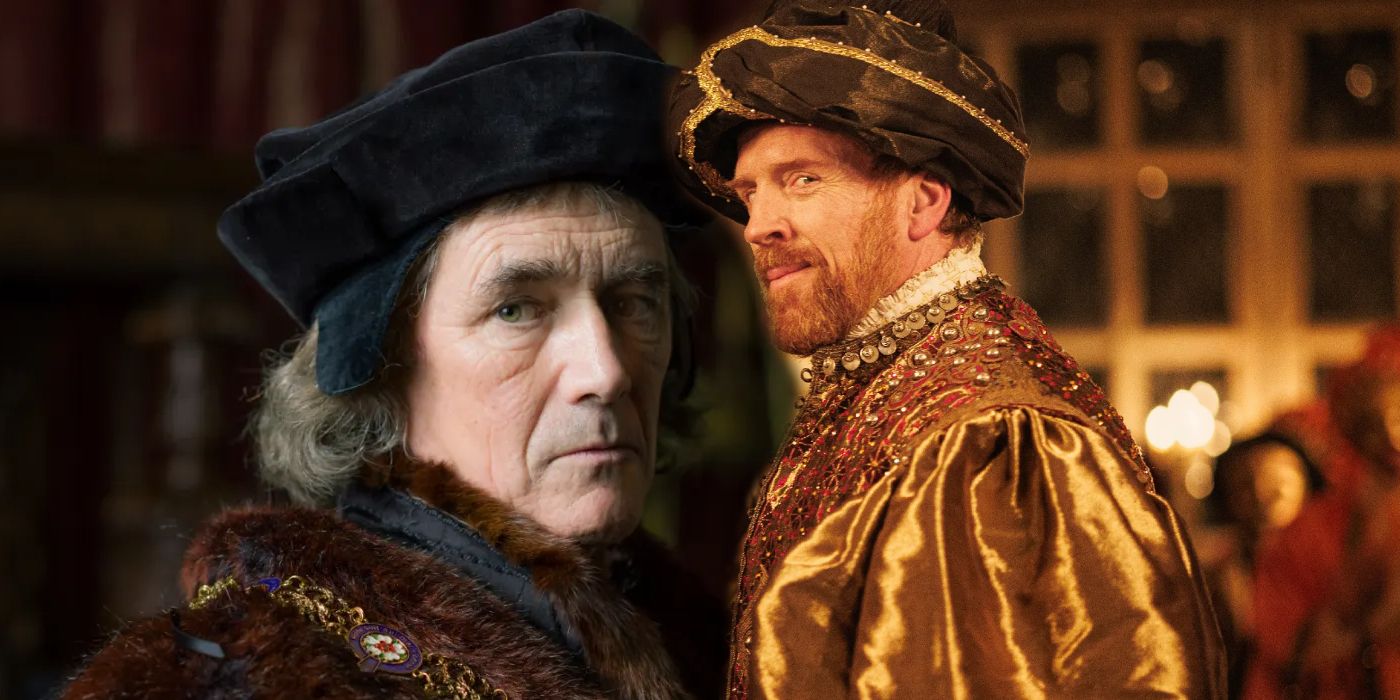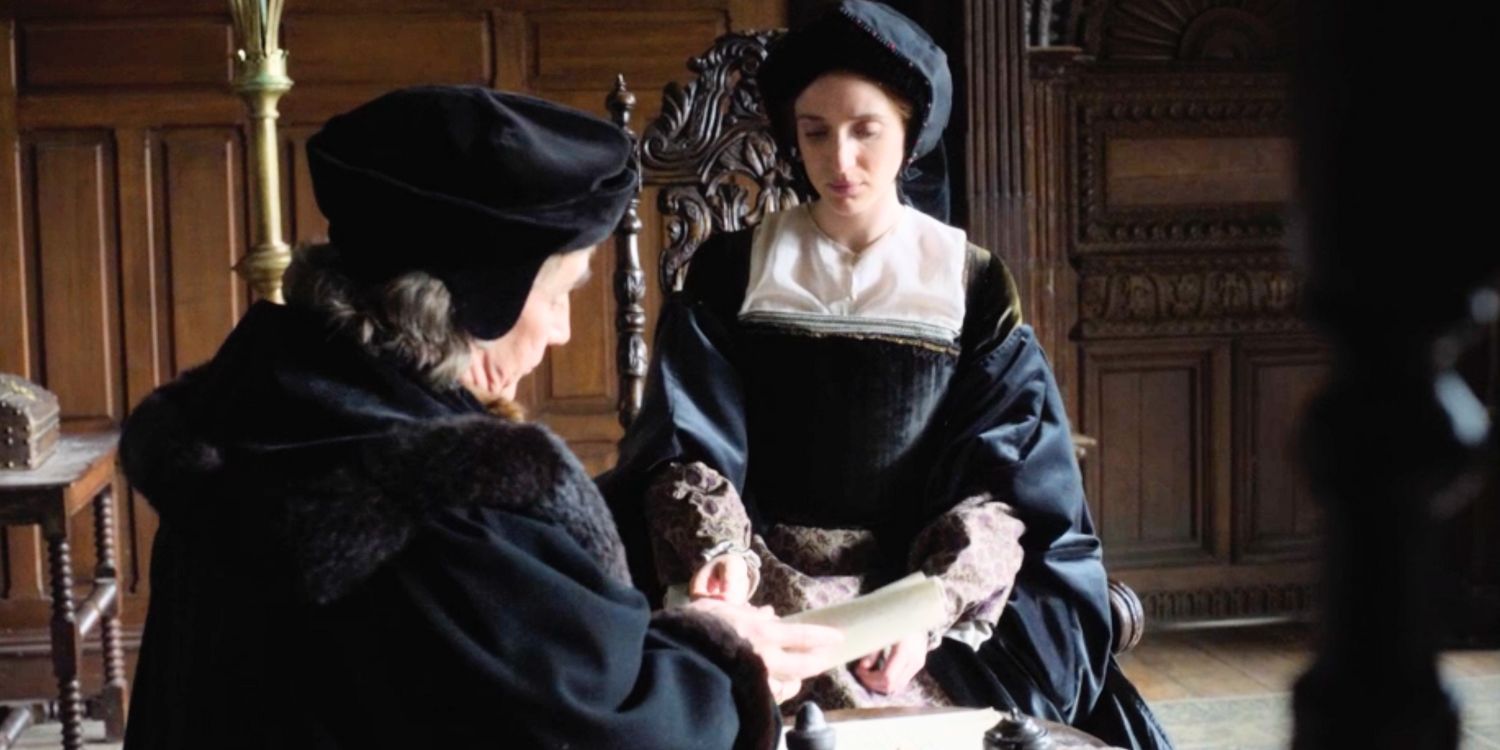Wolf Hall
Warning : Contains SPOILERS for Wolf Hall : The Mirror and the Light , episode 3
In a persistent crook , the second season ofWolf Hallweaves a real historic artifact into its narrative . The arresting tapestry , once owned by Cardinal Wolsey and later by Thomas Cromwell , takes center stage in episode 3 ’s final scene . Much like thebook Jane Seymour was translate in the precedingWolf Hallepisode , the piece has a literal historical ground .
This Flemish masterpiece , dating back to the fifteenth century , becomes a touching symbolization of Cromwell ’s past and the ghostwriter that keep to haunt him . The tapestry service as a metaphor for several stem in the series , such as the ghosts of Cromwell ’s hush-hush past , Henry VIII ’s marriageand dynastic concern , and the predicament of Anne Boleyn .

Wolf Hall Season 2, Episode 3 Features A Real Tapestry
The Piece In Cromwell’s Home Is A Real Flemish Tapestry
Thomas Cromwell , usually the picture of Stoicism , is being haunted by his past in season 2 ofWolf Hall . One of these hauntings follow in the strain of a real arras that Cromwell owned . It is work to attention by a visitor in the last scene of episode 3 . The visitor , Jane , recognize her mother , Anselma , in the tapestry . This move Cromwell to explain the backstory of the tapestry ’s journey .
Cromwell had been so transfixed by the portrait of the Queen of Sheba in the tapestry that King Henry VIII suggested he keep it in his nursing home . The arras had previously belonged to Cardinal Wolsey , Thomas Cromwell ’s mentor who haunt him in instalment 1 and 2 . Jane then disclose that she is Anselma ’s daughter and that Cromwell is her founding father , leave the episode on a gripping cliffhanger . This follows speculation about his other romantic connections , such as hisalleged intention to marryWolf Hall ’s Lady Mary .
As a fascinating tidbit for fans interested in learning more about the geological period , this fussy tapestry is a real artefact in Tudor history . The piece , which record the Queen of Sheba encountering King Solomon , is Flemish in origin . It was made in the previous fifteenth century and is presently located at the Grobet - Labadié Museum in Marseille , France , adding to the historic genuineness of the play .

The Sheba And Solomon Tapestry Brings Wolf Hall Full Circle
The Tapestry Is Used Cleverly To Bind Cromwell To Anne Boleyn’s Story
This is not the first time the Flemish tapestry has been featured inWolf Hall . It was also featured in time of year 1 but , nine years after the originalWolf Hallepisodes , viewers would be forgiven for blank out . Like many other details in the new season , the background is reiterated in the dialogue – however , unlike Henry ’s initial wooing of Jane Seymour , it does not get a flashback scene in the installment .
In both the show and its source fabric , Hillary Mantel’sWolf HallandBring Up The Bodies , the tapestry is waver throughout the story . It is used to mirror Anne Boleyn ’s tragical journey . first , she meet Wolsey , who prevent her marriage to Henry Percy . Then she marries Henry VIII . Finally , Cromwell had a big role in her curse . Reflective of this narrative , the Sheba and Solomon tapis first belongs to Wolsey , then to Henry , and then to Cromwell .
Mary play a major part in the first instalment of the extremely anticipated second season of Wolf Hall . Why was she an illicit child of Henry ?

This brings Cromwell ’s story full circle because of his guilty conscience regarding both Boleyn and Wolsey . Whereas Wolsey ’s trace is feature in episodes 1 and 2 , it is Anne ’s that haunts him in episode 3 . Her ladies appear as phantasma in Cromwell ’s way , hold her head from theBoleyn slaying shown inWolf Hallseason 2 ’s opening . Anne and Henry ’s Romance language was collimate with Sheba and Solomon ’s in the period , making the tapestry ’s reappearance all the more poetic .
Henry VIII’s Abraham Tapestries Show He Identified With Biblical Figures
The Depiction Of Solomon Specifically Was Commissioned By Henry
The tapestry shown in theWolf Hallepisode is one of the many noteworthy tapestries of Hampton Court Palace . In particular , this is an example of an Abraham tapestry . Henry VIII did not just have a total of six married woman at his court ; he also had six enormous Abraham tapestries . This show a particular interest in and identification with scriptural figures , including King Solomon , whose power is ordain by God .
Henry identified with Solomon because he want to be get it on for his wiseness and judgment .
This is particularly significant given the context of use of the Reformation and Henry ’s break with Rome . Tapestries were both a status symbol and an authoritative vehicle for storytellingin the Tudor court . It is trust that Henry commissioned the Abrahams in 1541 ( perHRP ) . Henry distinguish with Solomon because he wanted to be known for his wisdom and judgment . In addition , being appointed to find in God ’s spot is another deliberate parallel . Upon break off with the authorisation of Rome , Henry necessitate to emphasize his godlike rightfield .

germ : HRP
Your Rating
Your commentary has not been save
Cast

